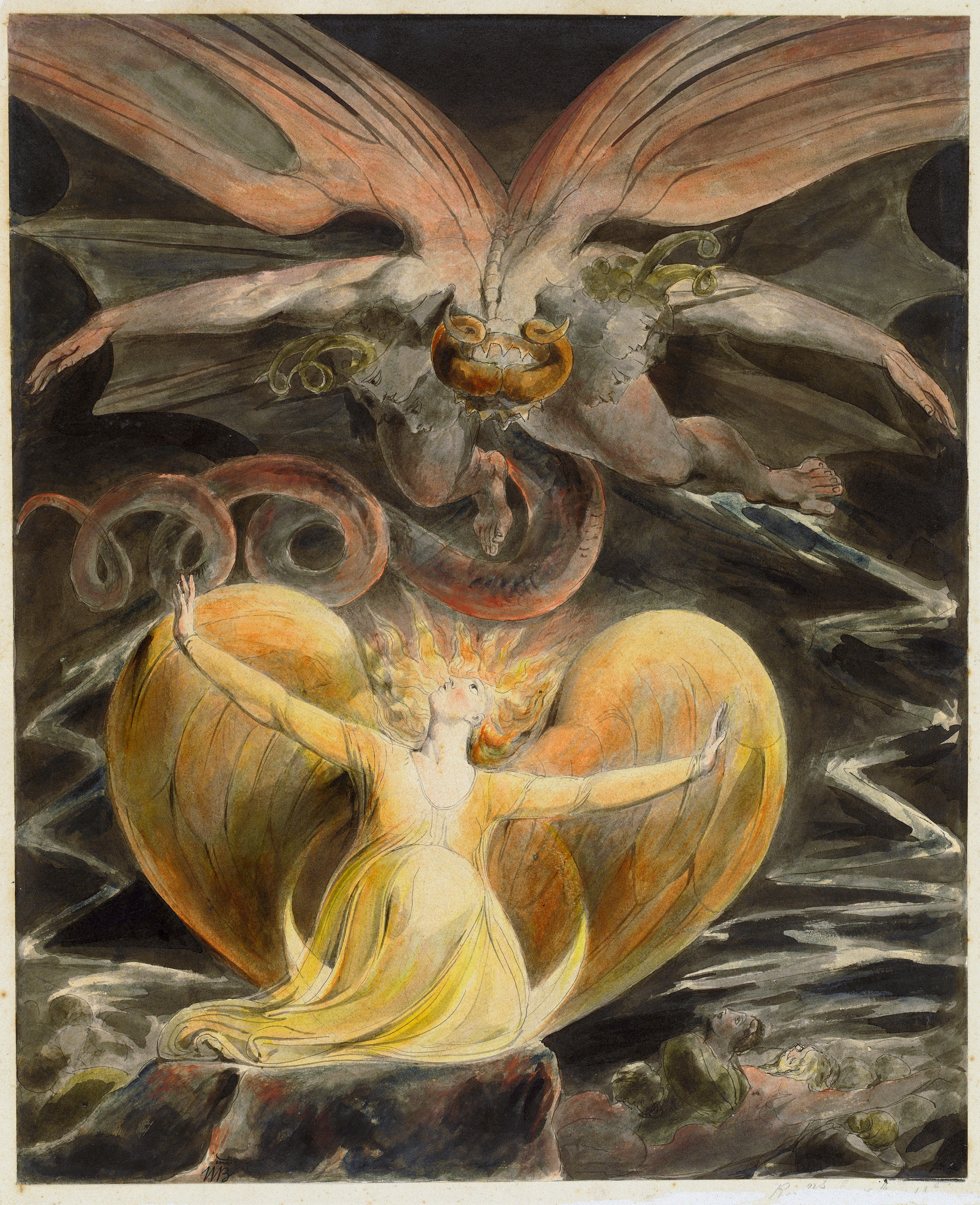 |
|
William Blake’s The Great Red Dragon and the Woman Clothed with Sun (1805). This is what conceptual art used to be about.
|
 |
| Nothing new under the sun, except perhaps that the murals in Pompeii were in a brothel, not a gallery. |

Watch Me Paint: World-Class Art, World-Class Instruction
 |
|
William Blake’s The Great Red Dragon and the Woman Clothed with Sun (1805). This is what conceptual art used to be about.
|
 |
| Nothing new under the sun, except perhaps that the murals in Pompeii were in a brothel, not a gallery. |
Study for “Northern River” by Tom Thomson
Like every other kid who grew up in
What Albright-Knox didn’t collect is every bit as interesting, because it missed two seminal movements in modern art that were happening right by its own back door. It acquired only about a dozen or so works on paper by
The Group of Seven were, above all, acolytes in a nascent cult of
“We live on the fringe of the great North across the whole continent and its spiritual flow, its clarity, its replenishing power passes through us to the teeming people south of us.” (Lawren Harris)
The Group of Seven understood the artists’ role as prophets of this spiritual identification.
“Indeed no man can roam or inhabit the Canadian North without it affecting him, and the artist, because of his constant habit of awareness and his discipline in expression, is perhaps more understanding of its moods and spirit than others are. He is thus better equipped to interpret it to others, and then, when he has become one with the spirit, to create living works in their own right, by using forms, color, rhythms and moods, to make a harmonious home for the imaginative and spiritual meanings it has evoked in him. Thus the North will give him a different outlook from men in other lands. It gives him a difference in emphasis from the bodily effect of the very coolness and clarity of its air, the feel of soil and rocks, the rhythms of its hills and the roll of its valleys, from its clear skies, great waters, endless little lakes, streams and forests, from snows and horizons of swift silver…” (Lawren Harris)
Ultimately the Group of Seven’s agenda (the celebration of the unique power of
In fact, some of what they did—abandoning value, abandoning the ‘scene’, ignoring atmospherics—could never work if their color mixing and drawing were not so spot-on.
In fact, I think the reason Seymour Knox ignored them is that they challenged him in two key points that would really irk a mid-century American mogul: that modernism was inherently better than tradition, and that being American was inherently better than being Canadian. But at a fifty year remove, Knox seems almost pathetically provincial, blindly following
I can only speak as a New Yorker, but from my vantage point, there has been no clear sense of direction in painting for the last three decades. However, one thing seems clear: representation and technique have returned to importance, and Abstract-Expressionism (although it leaves its mark) has far less influence now than at any other point in my life.
The earliest core of the Group of Seven— Tom Thomson (who was never a formal member), AY Jackson, Arthur Lismer and Frederick Varley—were painting together in Algonquin Park by 1914, at which point their work was interrupted first by the onset of the Great War, and then by the untimely death of Thomson, who was found dead in Algonquin under mysterious circumstances. The group eventually included Lawren Harris, JEH MacDonald, Frank Johnston, Franklin Carmichael, AJ Casson, Edwin Holgate, and LL Fitzgerald. Emily Carr and Clarence Gagnon were closely affiliated with them in viewpoint and technique.

“Sopwith Camel Looping” by Frank Johnston. Several of the Group of Seven painters were conscripted into the war effort. When viewing Johnston’s aerial perspectives, one must remember how rare and new flight was and the difficulty of taking reference photos at the time.